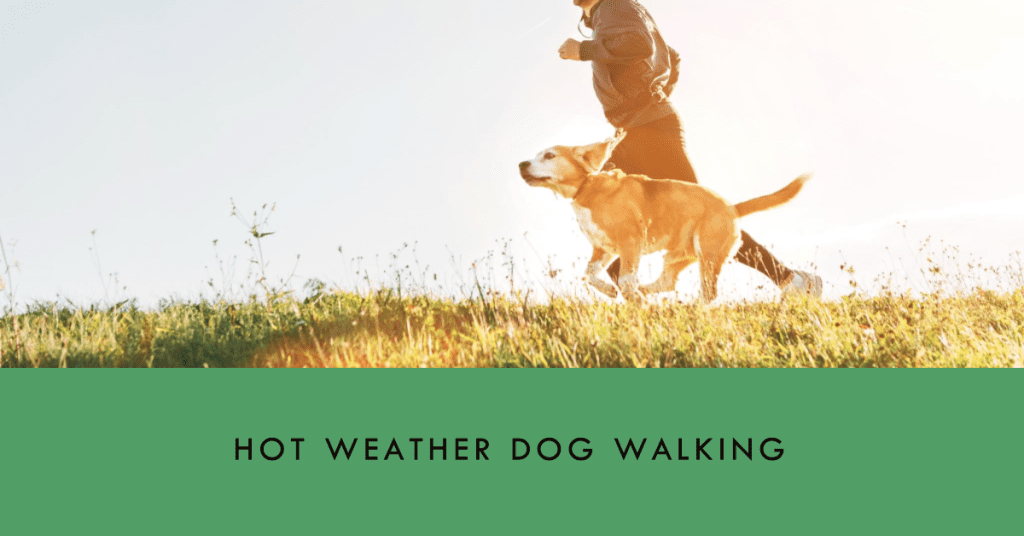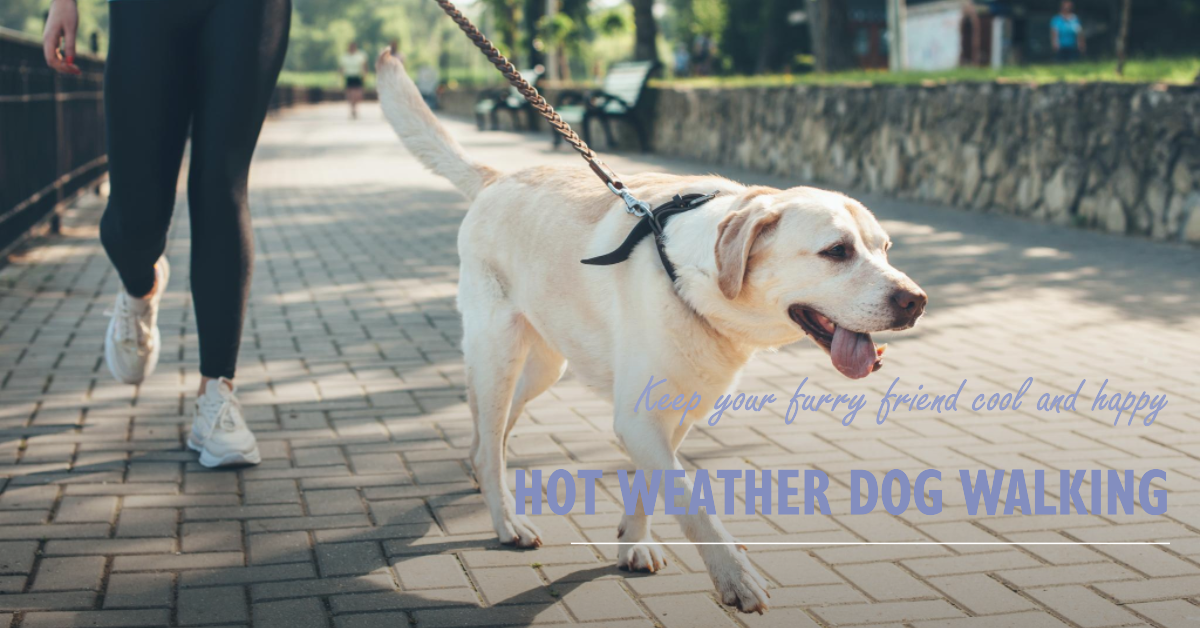Key Takeaways:
- Hot pavement can cause damage to a dog's paw pads, so it's important to protect them by walking on grass or using dog booties in extreme heat.
- Signs of overheating in dogs include excessive panting, drooling, vomiting, and weakness. It's crucial to recognize these signs and take immediate action to cool down the dog.
- In cold weather, it's essential to provide dogs with adequate protection such as dog sweaters or jackets to prevent hypothermia. It's also important to limit the duration of walks and keep an eye out for signs of discomfort.
With scorching temperatures on the rise, it's essential to understand How Hot Is Too Hot To Walk Dogs. We'll dive into expert opinions on what constitutes a dangerous heat threshold for dogs. Additionally, we'll explore the telltale signs of overheating in dogs, ensuring we can identify and prevent potential risks. Stay tuned to keep your canine companions happy, healthy, and safe during hot weather conditions.
How Hot is Too Hot for Dogs: Expert Opinions


Experts warn that a temperature above 90°F could be hazardous for dogs. They cannot cool down by sweating, making them more prone to overheating. Breed, age, and health conditions can also affect their heat tolerance.
Therefore, it's essential to provide them with shade, and water, and limit their outdoor activities when the temperature is too hot. Additionally, special attention needs to be paid to breeds with short snouts or thick fur as they are more at risk of heat-related problems.
It's important to monitor the temperature and take necessary precautions to ensure your dog's safety. Early morning or late evening walks are best when the temperature is cooler.
Additionally, look out for signs of overheating like excessive panting or lethargy. Don't let your fear of missing out on a walk override your dog's safety – prioritize their well-being.
Signs of Overheating in Dogs
It's vital to recognize signs of overheating in dogs, such as excessive panting and drooling. They may also appear lethargic or weak. Every dog is different, so familiarize yourself with your pet's usual behaviour. If you notice any changes, provide them with shade, water, and a cooler environment.
When taking your pup out for a walk in hot weather, test the pavement with the back of your hand. If it's too hot for you, it'll also be too hot for your furry friend! Take extra steps to protect your pup, such as walking them during cooler parts of the day and providing water and rest breaks. Dog booties can help prevent burns from hot pavement.
Monitor your pooch for any signs of discomfort in hot weather. Their well-being should always be prioritized. Be informed and attentive to your pet's needs in all weather conditions, and make sure to keep those doggy booties handy!
Protecting Dogs from Hot Pavement
Protecting our furry friends from the scorching heat of pavement is crucial. In this section, we'll explore effective tips for walking dogs in hot weather, ensuring their safety and well-being. By implementing these suggestions, we can prevent potential discomfort, paw pad damage, and heat-related issues that may arise during our outdoor adventures with our beloved canine companions.
Tips for Walking Dogs in Hot Weather
When it's hot outside, strolling with your pup requires extra attention and care. Experts have flagged the risks of overheating in dogs, so it's essential to know the signs and take precautions. Here are some tips for walking dogs in hot weather:
- Shorten the walk: Cut the length of walks during peak heat hours to save your pup from too much heat.
- Go cooler: Look for shady areas or paths with grass or dirt instead of hot pavement.
- Hydrate often: Bring extra water and a collapsible bowl for your pup to drink and take frequent breaks.
Additionally, strenuous exercise or intense activities should be avoided to prevent overheating. By implementing these tips, you can keep your furry friend safe and comfy during hot-weather walks. Remember, some breeds such as pugs and bulldogs are more prone to heat-related issues due to their inability to regulate body temperature. So, when walking these breeds, extra caution is needed.
Consider your pooch's individual needs and expert advice to make informed decisions and prioritize their safety while enjoying a hot-weather walk. And don't forget, with the right winter gear, your pup can go out even when it's cold!
Walking Dogs in Cold Weather
In the section on walking dogs in cold weather, we explore the importance of taking precautions to keep our furry friends safe and healthy. From emergency medical attention to practical tips for walking dogs in cold weather, we'll provide you with the information you need to ensure your canine companion stays happy during chilly walks.
Emergency Medical Attention
Different weather needs different first-aid for dogs. In hot weather, watch out for heavy panting, rapid heartbeat, vomiting, or disorientation. Act quickly by giving water and moving them to shade. In cold weather, look out for shivering, weakness, or lethargy. Get them inside, wrap them in blankets, and see a vet.
To prevent conditions, give shade and water when hot, dress warm, and provide shelter when cold. Don't let them sniff too long in the snow!
Walking Dogs in Cold Weather
Experts are adamant that walking dogs in cold weather is a must. Research indicates that extra care must be taken when taking your four-legged pal for a stroll during colder times. Safety and health are essential!
Conclusion: Prioritizing Dog's Safety in All Weather Conditions
Ensuring a pup's safety in all weather is key for responsible pet owners. Knowing the temperatures safe for walking dogs is essential, as extreme weather poses serious health risks. The article “How Hot Is Too Hot To Walk Dogs” is vital in considering factors such as the outside temp, humidity levels, and the pup's breed and age. High temps can lead to heatstroke, paw pad burns, and discomfort. It's important to be knowledgeable of the dangers and take precautions for our furry friend's well-being.
The article highlights the importance of monitoring temps and humidity when determining if it's safe to walk our dogs. Dogs don't sweat and pant to regulate their body temp, so higher temps and humidity make it hard for them to cool down, leading to heatstroke. Certain breeds and older dogs are more sensitive, so their exercise in hot weather should be adjusted. Pet owners should be aware of these factors.
In addition, it's important to consider the surface temperature. Hot pavement or sand can cause burns and blistering on paw pads. Pet owners should test the surface with their hands before allowing their pup to walk on it. Protecting our dogs' paws is essential.
Taking into account temperature, humidity, breed, age, and surface temps, pet owners can make informed decisions for their pup's safety during walks. Being attentive to these matters ensures our furry companions' comfort and prevents them from experiencing heat-related illnesses or injuries. It's important to prioritize our pup's safety, especially when it comes to weather that can harm them.
Some Facts About How Hot Is Too Hot To Walk Dogs:
- ✅ Pavement can heat up quickly and become hotter than the surrounding air, potentially causing burns to a dog's paw pads. (Source: The Spruce Pets)
- ✅ Dogs have paw pads that lack fur and are made up of thick skin, fat, and connective tissue. (Source: The Spruce Pets)
- ✅ Both black asphalt and concrete surfaces can become too hot for a dog to walk on. (Source: The Spruce Pets)
- ✅ At temperatures above 130 degrees Fahrenheit, a dog's skin will show signs of thermal injury within 60 seconds. (Source: The Spruce Pets)
- ✅ Walking a dog earlier in the day or later in the evening when the pavement is cooler can help prevent injuries. (Source: PureWow)
FAQs about How Hot Is Too Hot To Walk Dogs
How hot is too hot to walk large breed dogs?
Large-breed dogs are more prone to heatstroke, so it's important to exercise extreme caution. Temperatures above 75.2°F to 80.6°F (24°C to 27°C) can be dangerous for them.
What can severe burns on a dog's paw pads indicate?
Severe burns on a dog's paw pads can indicate that the pavement temperature was too hot. These burns can cause visible damage, such as ulcerated skin and blisters.
How does a dog's thick skin protect them from hot surfaces?
A dog's paw pads are made up of thick skin, which acts as a shock absorber and helps with temperature control. However, it's important to remember that even thick skin has its limits.
What are some alternative exercises for dogs on hot days?
To keep your dog active and safe on hot days, try alternative exercises such as playing a game inside like hide and seek, setting up an obstacle course, or letting them enjoy a doggie splash pool.
How can I determine if the pavement is safe for my dog to walk on?
To determine if the pavement is too hot for your dog, hold the back of your hand on the pavement for five seconds. If it feels uncomfortably hot, it is also too hot for your dog.
How can I prevent heatstroke in dogs during walks?
To prevent heatstroke during walks, it's important to reschedule walks for cooler times of the day, provide plenty of shade and fresh water, take shorter walks, and avoid strenuous activities. Keep a close eye on your dog for signs of heatstroke, such as excessive panting and difficulty breathing.





